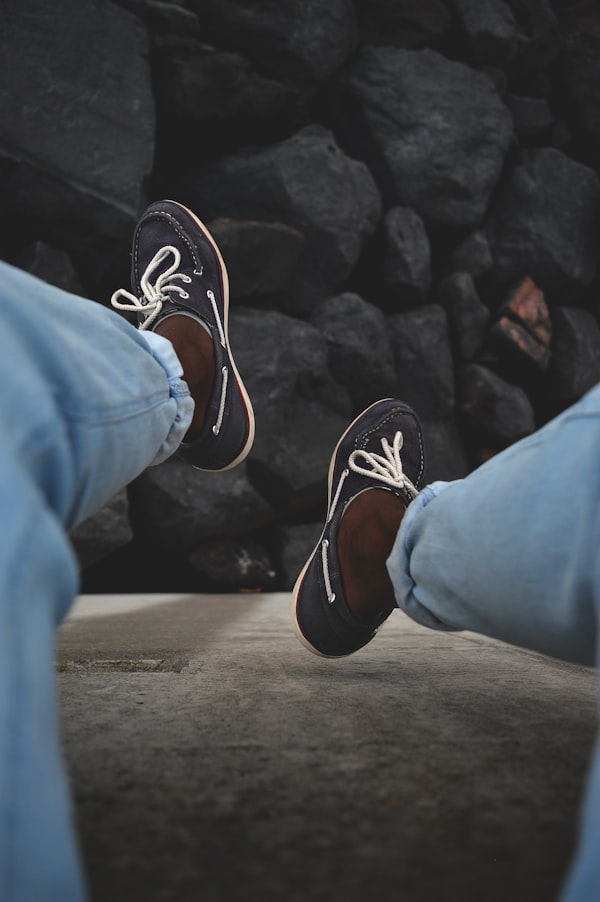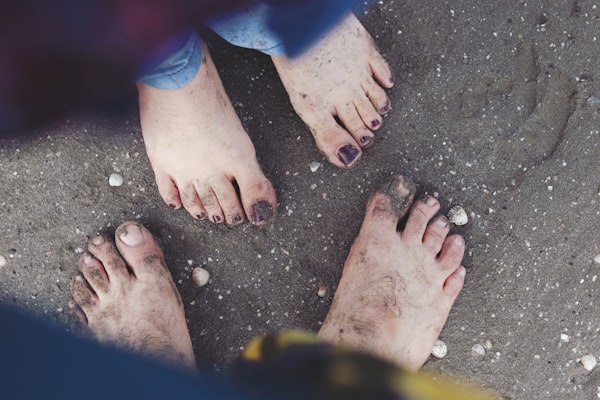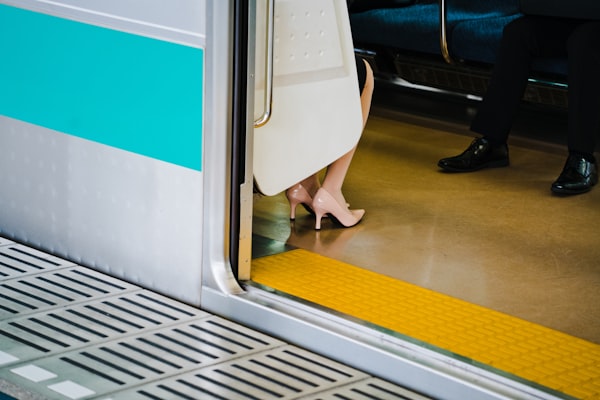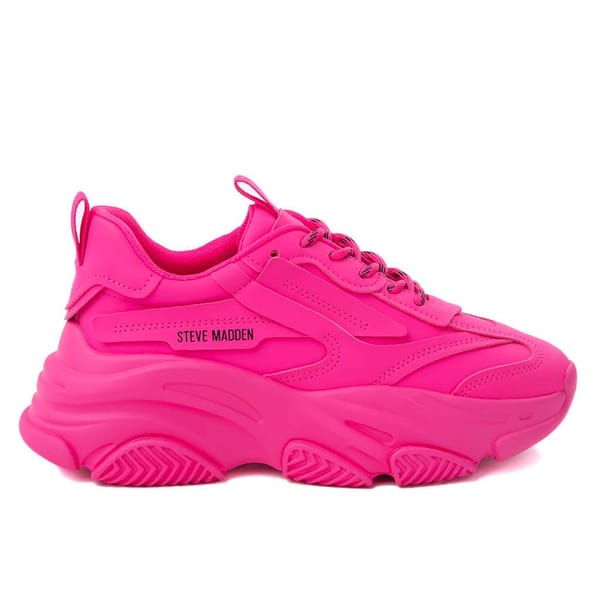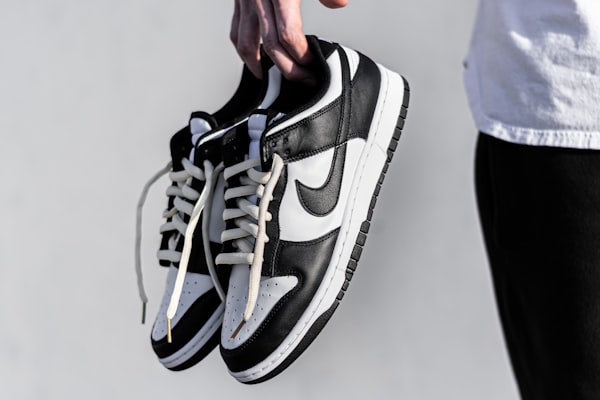Are you tired of your elegant strides turning into painful slogs due to those relentless heel-rubbing shoes? Well, it's high time you end this daily struggle.
Imagine this: You've carefully selected your outfit, striving for that impeccable style. You're confident and ready to take on the world, but the pesky shoe-rubbing issue threatens to derail your vibe. Don't let footwear friction be the Achilles' heel of your fashion game!
We understand your longing for a pain-free, stylish stroll through life. Picture yourself confidently gliding through every occasion without the agony of blisters or discomfort. The right knowledge and strategies can transform your footwear game, making you a heel hero in your own right.
It's time to kick those heel-rubbing woes to the curb and embark on a journey toward shoe comfort and style supremacy. This article will equip you with the tools and wisdom to conquer heel rubbing, ensuring your walk is as smooth as your fashion choices. Say goodbye to those painful blisters and hello to a world of comfort and confidence. Let's dive in!
What Causes Heel Rubbing in Shoes?
Heel rubbing in shoes is a common issue that can be pretty uncomfortable and potentially problematic. It occurs when factors related to the shoe's design, fit, or materials create friction against the back of your heel. This friction can be attributed to several causes, including wearing improperly sized shoes that are either too tight or loose. When shoes don't fit correctly, they can pinch your heel or allow your foot to slide within the shoe, leading to constant rubbing.
Stiff or unyielding materials, especially in the heel counter—the back part of the shoe surrounding your heel—can also contribute to this problem. These materials can be abrasive against your skin, causing irritation. Moreover, inadequate cushioning inside the shoe can result in increased pressure on your heel, making it more prone to rubbing and the development of discomfort.
What Happens if I Don't Address Heel Rubbing?
The consequences of heel rubbing extend beyond immediate discomfort. It can lead to painful blisters, calluses, and sore spots on the back of your heel. These conditions can significantly hinder your ability to walk comfortably and can even escalate to more serious issues if left untreated. Chronic heel rubbing can cause long-term skin damage, such as thickened skin (hyperkeratosis) and calluses, making your heel less supple and more prone to further rubbing. Open sores from burst blisters also expose your skin to bacteria, increasing the risk of infection.
Given these discomforts and potential complications, addressing heel rubbing is paramount. Not only does it improve your immediate comfort and foot health, but it also enhances your overall style and confidence. Ill-fitting or uncomfortable shoes can negatively impact your self-assured stride, making it difficult to put your best foot forward.
Prevention Techniques
Let's delve into various effective prevention techniques that will help you bid farewell to this pesky issue once and for all. Whether you're a fashion lover or simply someone who values comfort, these strategies will ensure you can walk confidently and comfortably in any pair of shoes.
1. Proper Shoe Sizing and Fitting
The foundation of preventing heel rubbing lies in getting the correct shoe size. Start by measuring your feet accurately, preferably in the afternoon when they are slightly larger. This will help you find a size that accommodates both feet comfortably. Remember, your feet may not be the same size, so always fit the larger foot.
Test the fit of shoes while standing, walk around in them to ensure comfort, and leave a little room (about a thumb's width) between your longest toe and the shoe's end. Don't hesitate to try various sizes and styles to find the perfect fit.
2. Choosing the Right Shoe Type
Not all shoe styles are created equal when it comes to heel rubbing. Pay attention to the design and materials of the shoe. Open-back or slingback shoes may rub more, while closed-back or lace-up shoes often provide a snugger fit that reduces friction.
3. Breaking in New Shoes
Breaking in new shoes gradually can help prevent heel rubbing. Wear them for short periods initially, allowing your feet to adjust to the shoe's shape and materials. Use protective measures like moleskin or bandages on potential rubbing areas while your shoes mold to your feet.

4. Utilizing Heel Grips and Inserts
Heel grips and inserts are your secret weapons against heel rubbing. They provide extra cushioning and support and can modify the shoe's fit to reduce friction. Consider using gel or foam inserts for added comfort and to fill any gaps in the shoe.
5. Exploring Alternative Lacing Techniques
Don't underestimate the power of laces in achieving a snug fit. Experiment with different lacing techniques to customize the fit of your shoes. For instance, skipping eyelets or using a heel lock lacing method can help secure your heel, reducing movement and friction.

6. The Importance of Moisture-Wicking Socks
Moisture can exacerbate heel rubbing by softening the skin and making it more susceptible to friction. Opt for moisture-wicking socks that keep your feet dry, preventing blisters and reducing the likelihood of heel rubbing. These socks are particularly beneficial if you have an active lifestyle or live in a humid climate.
Incorporating these prevention techniques into your footwear routine will ensure that your shoes are stylish and comfortable, allowing you to walk confidently and easily. Say goodbye to the discomfort of heel rubbing and hello to pain-free strides in your favorite shoes.
DIY Remedies for Heel Rubbing
Sometimes, you find yourself in a pinch with shoes that just won't cooperate. Don't worry; we've got you covered with some ingenious DIY remedies to ease the discomfort of heel rubbing. These simple and cost-effective solutions will come to your rescue when you need immediate relief or want to improve the overall fit of your shoes.
Using Common Household Items for Relief
- Moleskin or Bandages: When your shoes are causing irritation, applying moleskin or adhesive bandages to the areas where rubbing occurs can provide a protective barrier. Cut them to size and place them strategically to prevent further friction.
- Tape: Ordinary medical or fabric tape can also create a buffer between your skin and the shoe. It's a quick fix that can save you from painful blisters during those unexpected shoe emergencies.
Tips for Stretching and Softening Shoe Materials
- Heat and Wear: Use heat to your advantage. Wear your shoes with thick socks and blast them with a hairdryer on low heat. The warmth will help soften the material, making it more pliable. Walk around in your shoes while they cool to stretch them out.
- Freeze the Pain Away: Fill a plastic bag with water, place it inside your shoe, and put it in the freezer overnight. As the water freezes, it expands and stretches the shoe slightly. Remember to let the ice thaw before removing the bag.
Quick Fixes for Immediate Relief
- Silicone Cushions: Silicone heel cushions or inserts are handy for immediate relief. These soft, gel-like inserts add an extra cushioning layer, reducing friction and providing comfort while wearing your shoes.
- Adjust Your Socks: Fold a thin cotton or microfiber sock and place it at the back of your shoe, just above your heel. This can act as a cushion and help prevent direct contact between your skin and the shoe's interior.
- Lubrication: Applying a small amount of petroleum jelly or a lubricating balm to the back of your heel can reduce friction and provide temporary relief. It's a quick fix that can be especially helpful in a pinch.
These DIY remedies for heel rubbing are practical and can save the day when dealing with shoes that won't cooperate. Whether creating a protective barrier, stretching shoe materials, or using cushioning inserts, these solutions can provide immediate relief and make your shoes more comfortable. So, next time you find yourself in a heel-rubbing predicament, remember these simple tricks to keep your feet happy and blister-free.
Maintenance and Care
Taking good care of your shoes is not just about preventing heel rubbing; it's also about ensuring they last longer and continue to look their best. Here, we'll delve into the essential steps for proper shoe maintenance and offer some tips to extend the lifespan of your favorite footwear.
Properly Maintaining Your Shoes
- Cleaning and Conditioning Leather Shoes: Regular cleaning and conditioning are paramount for leather footwear. Use a soft brush to remove dirt and dust, then wipe them down with a damp cloth. Leather-specific cleaners and conditioners can help nourish the material and prevent it from drying out, cracking, or becoming stiff. Ensure your shoes are completely dry before wearing them again.
- Checking for Wear and Tear: Routinely inspect your shoes for signs of wear and tear. Look for loose stitching, worn-out soles, or damaged insoles. Addressing these issues promptly can prevent further damage and discomfort. If you notice any problems, consider taking your shoes to a professional cobbler for repairs.

Tips for Extending the Lifespan of Your Footwear
- Rotation Is Key: Avoid wearing the same pair of shoes every day. Rotating your footwear allows them to air out and prevents excessive wear on any single pair. It also helps maintain the shape of your shoes.
- Use Shoe Trees: Invest in shoe trees made from wood or plastic. These inserts help maintain the shape of your shoes, reduce creasing, and absorb moisture, which can be particularly helpful after a long day of wearing them.
- Protect Against the Elements: Be mindful of the weather and protect your shoes accordingly. Use waterproof sprays or products to shield them from rain and snow. Let them air dry naturally if they get wet, and avoid exposing them to direct heat sources like radiators.
- Resole and Re-Heel: Over time, the soles and heels of your shoes will wear down. Instead of discarding your favorite pair, consider having them resoled or re-heeled by a professional cobbler. This can significantly extend their lifespan.
- Clean Promptly: Accidents happen, but it's important to act swiftly when they do. If your shoes get stained or soiled, use the appropriate cleaning products or methods for their material as soon as possible. This can prevent stains from setting and becoming permanent.
- Store Them Properly: When you're not wearing your shoes, store them in a cool, dry place away from direct sunlight. Use shoe bags or boxes to protect them from dust and moisture.


Following these maintenance and care tips will keep your shoes in excellent condition and ensure they remain comfortable and stylish for years. Remember that a little attention and care go a long way in preserving your footwear investment and preventing potential heel-rubbing issues down the line.
When to Seek Professional Help
While many heel rubbing issues can be resolved with the techniques and remedies we've discussed so far, there are instances where seeking professional assistance becomes necessary.
Here are some situations where professional assistance may be necessary:
- Chronic Discomfort: If you've tried various prevention techniques, DIY remedies, and shoe adjustments, but the heel rubbing and discomfort persist, it's a clear sign that professional help may be required.
- Structural Shoe Problems: Sometimes, the issue lies within the shoe itself. If you notice structural problems, such as a misaligned or poorly constructed heel counter, it's best to consult a professional to assess whether the shoes can be repaired or need replacement.
- Severe Blisters or Injuries: If heel rubbing has led to painful blisters, open sores, or infections, it's essential to seek medical attention immediately. A healthcare professional can provide proper care and advice on how to treat the condition.
Cobblers are highly skilled professionals with expertise in repairing and altering footwear. They can assess the condition of your shoes and identify any issues contributing to heel rubbing. This includes evaluating the fit, structural integrity, and potential design flaws.
Cobblers can make custom modifications to your shoes to address heel rubbing problems. They can add padding, adjust the fit, or alter the heel counter to ensure a better fit and reduce friction.
If the soles or heels of your shoes are worn out and contribute to heel rubbing, a cobbler can replace or repair them. This can extend the life of your favorite shoes and make them more comfortable.
Cobblers are a valuable source of knowledge when it comes to footwear. They can recommend shoe styles less likely to cause heel rubbing and advise how to maintain and care for your shoes to prevent future issues.
Don't hesitate to seek professional help if your heel rubbing problems persist or you encounter structural issues with your shoes. Cobblers have the expertise to assess, repair, and modify footwear, ensuring you enjoy comfortable, pain-free strides. Their guidance and assistance can be invaluable in resolving stubborn heel-rubbing issues and maintaining the longevity of your favorite pairs.
On a Final Note
As we wrap up our heel-heroic journey, remember: you've now got the power to strut confidently, free from the woes of heel rubbing. Your shoes will no longer be the arch-nemesis of your comfort and style. So, let's raise a toast to blister-free strides and fashionable strides!
Now, step out with that newfound swagger, knowing that you're the true hero of your own fashion story. Embrace the world with your confident stride and share these heel-saving tips with your fellow fashion enthusiasts.
Life's too short for uncomfortable shoes and fashion missteps. With our guidance, you've conquered heel rubbing and are ready to conquer the world – one stylish step at a time. Stay fabulous, stay comfortable, and remember, you're the hero of your own shoe saga!
Related Articles






